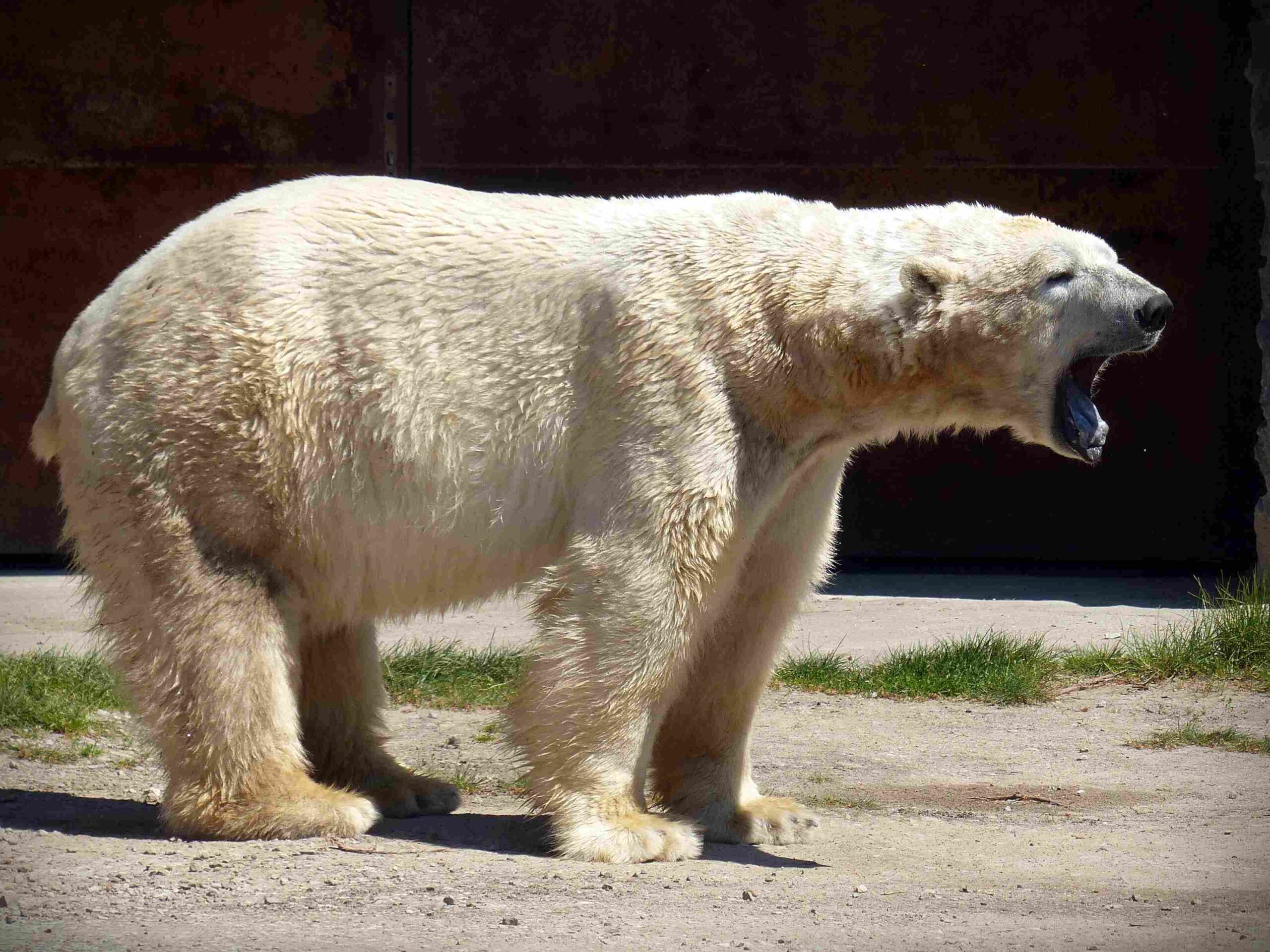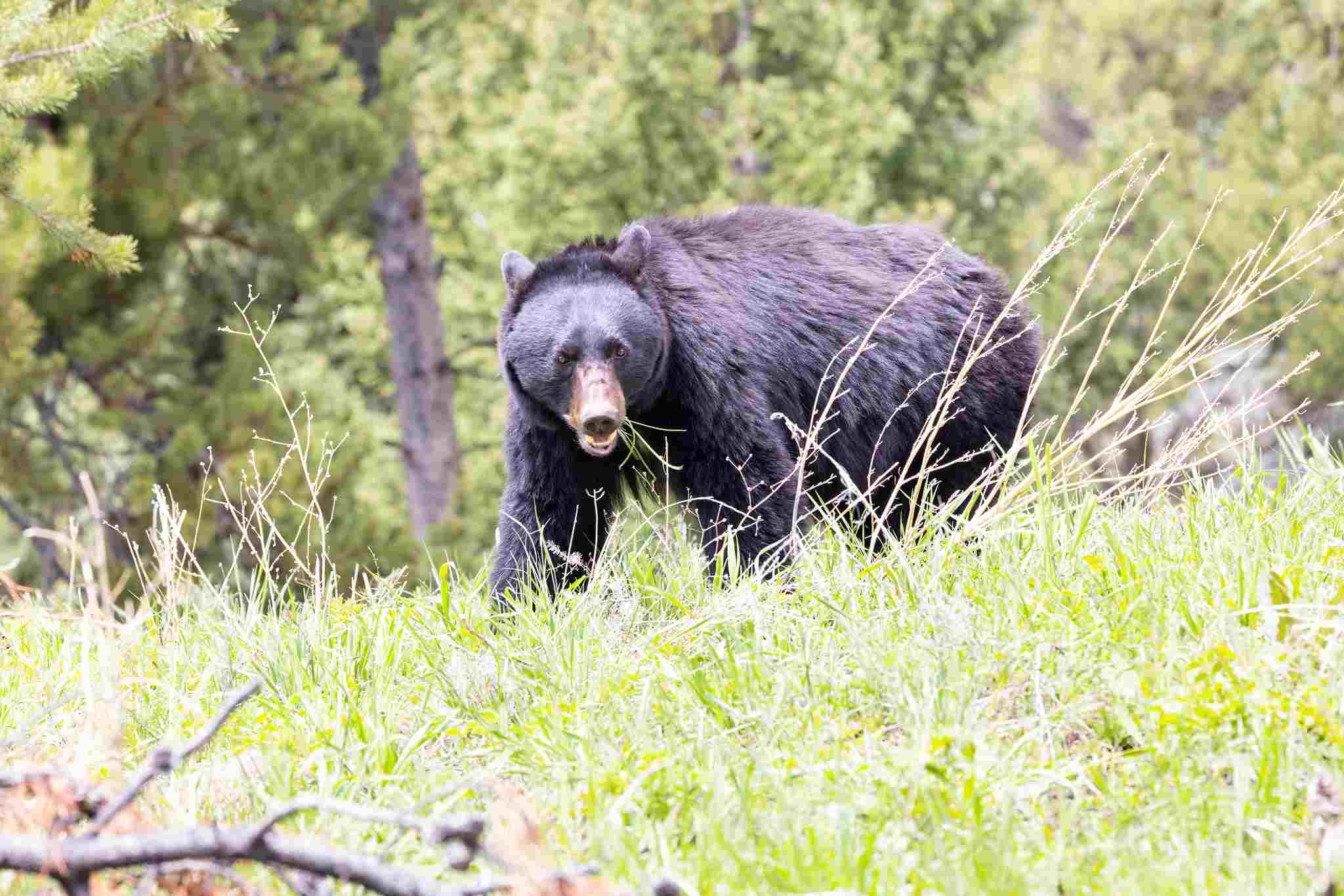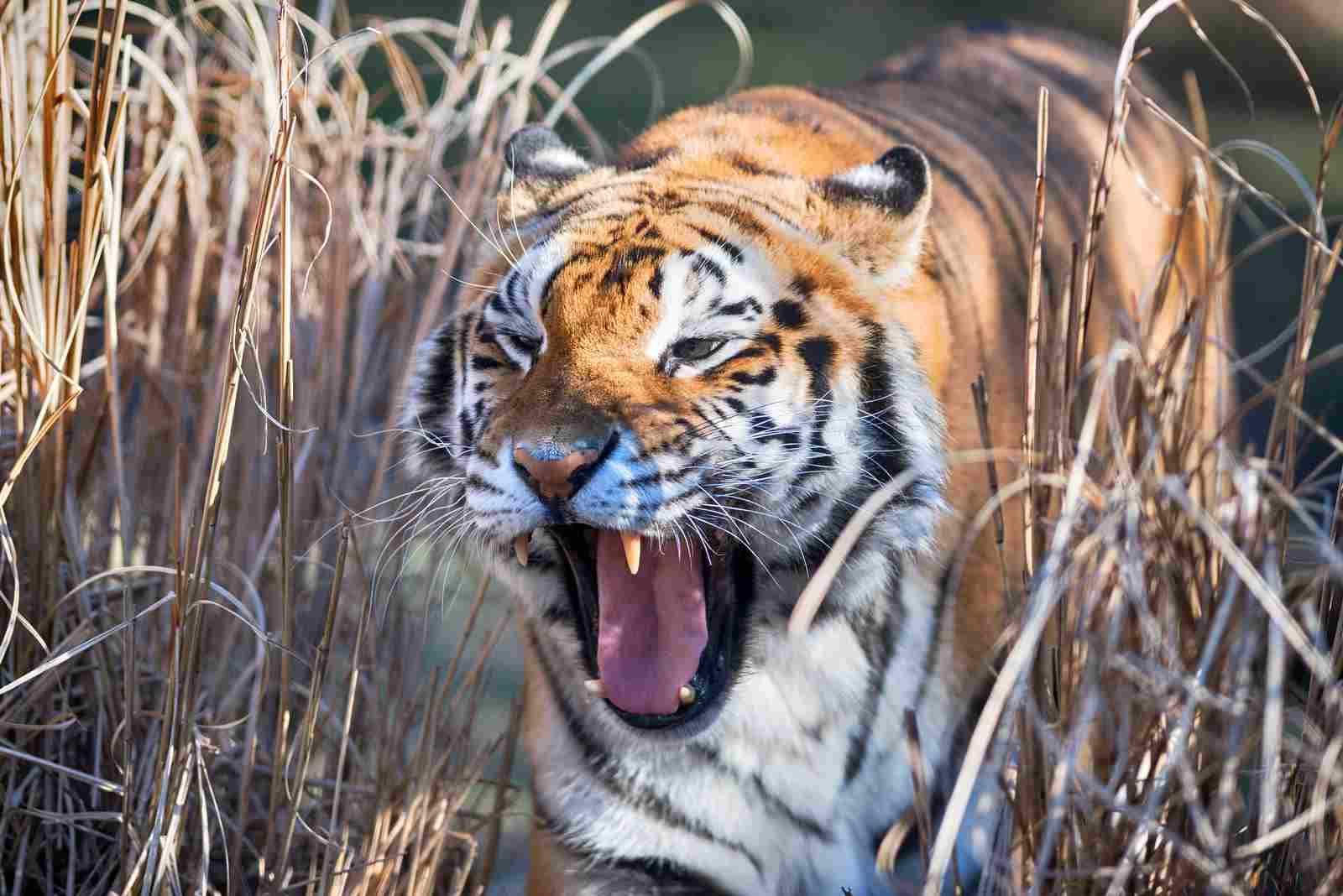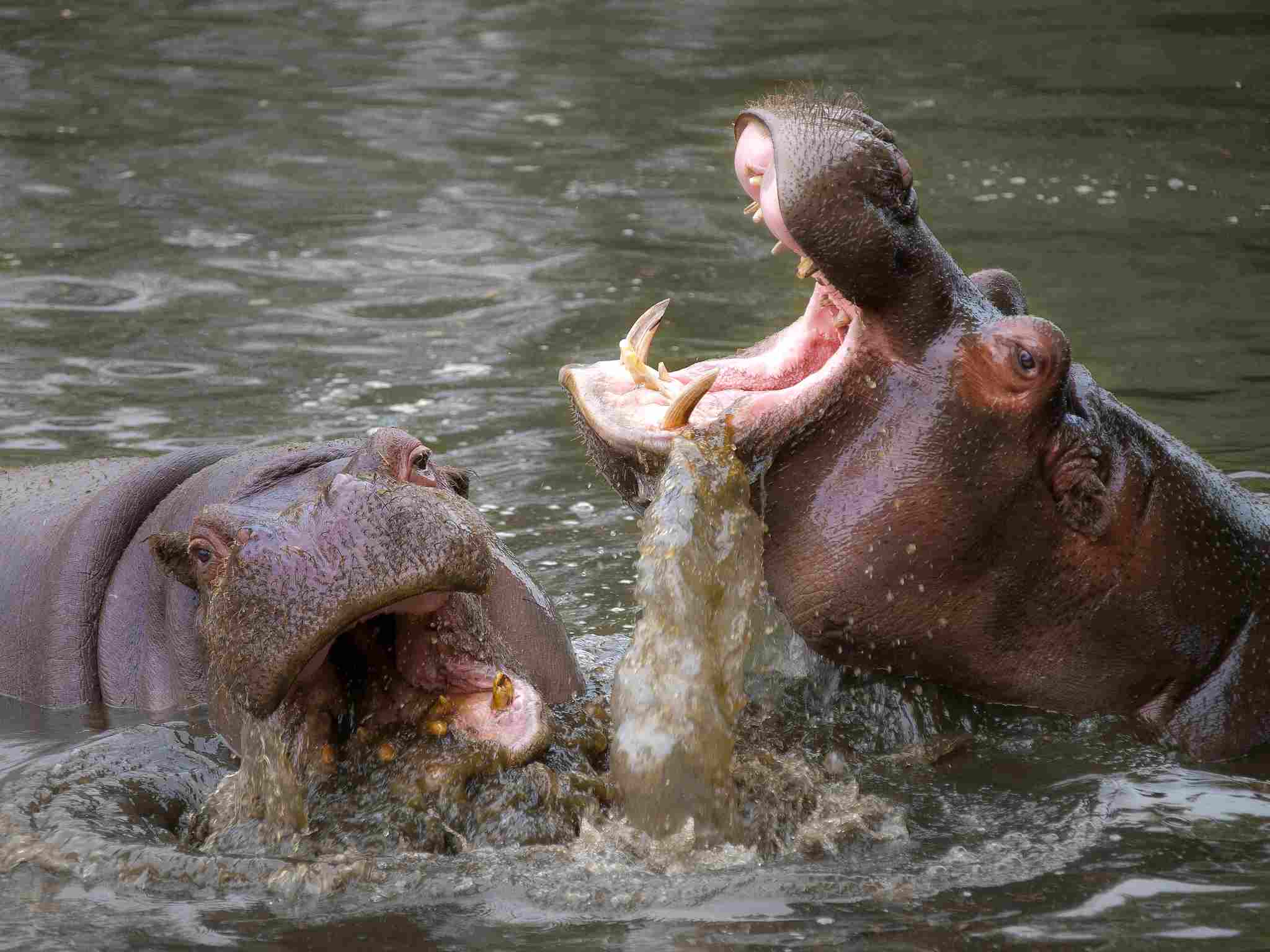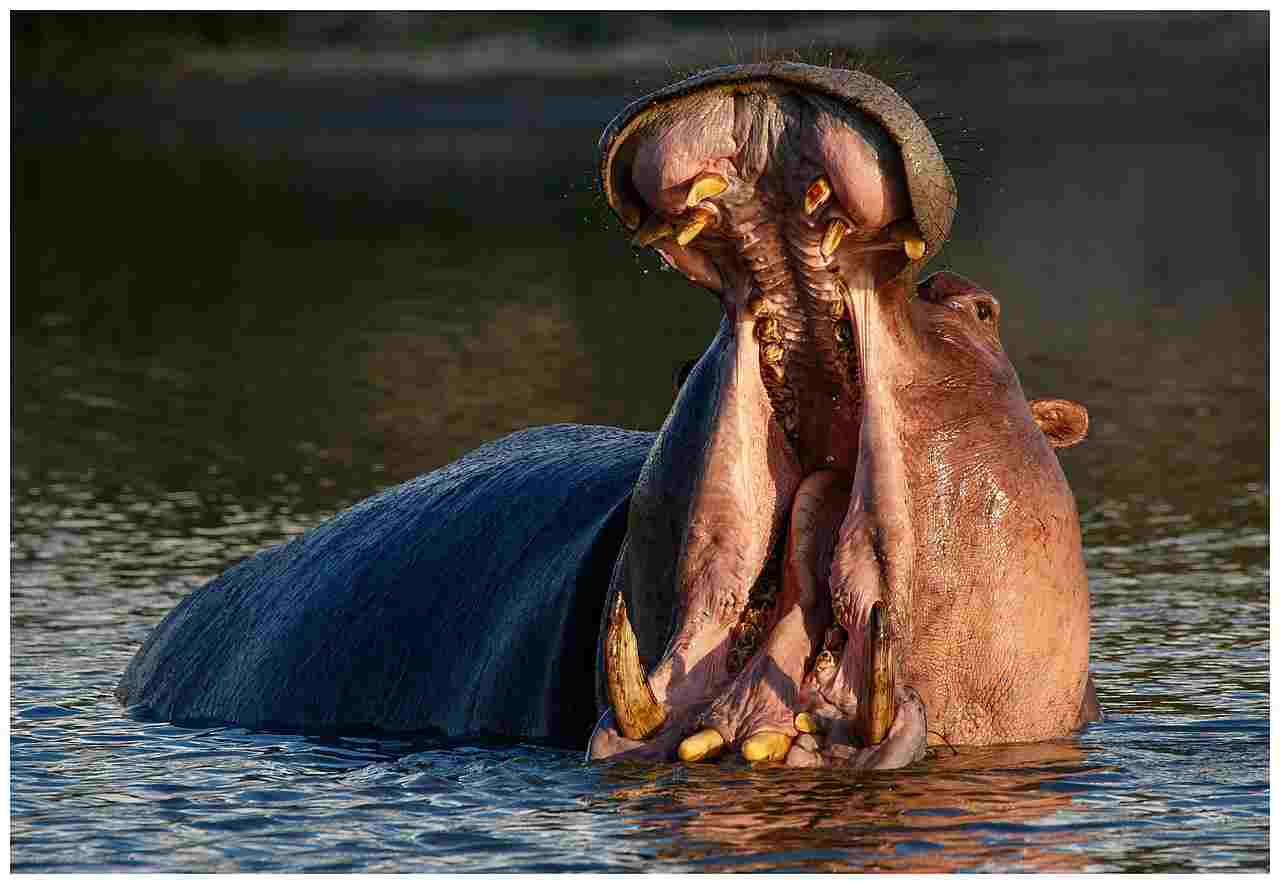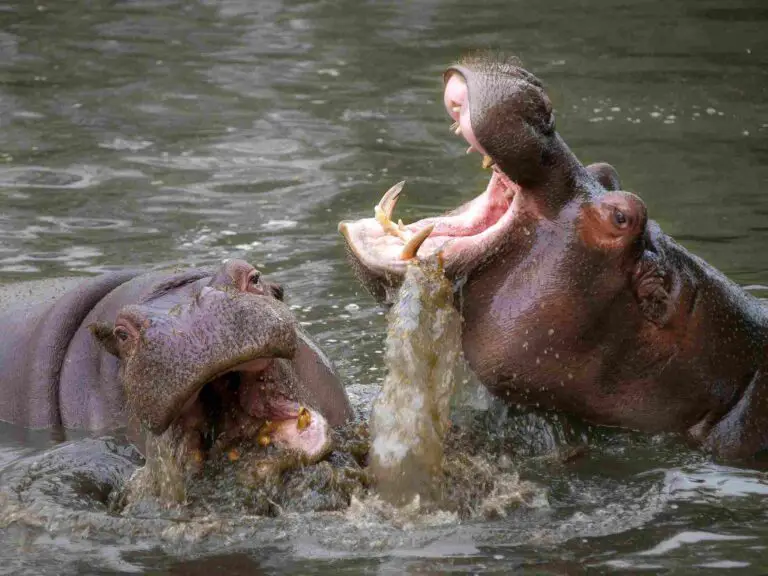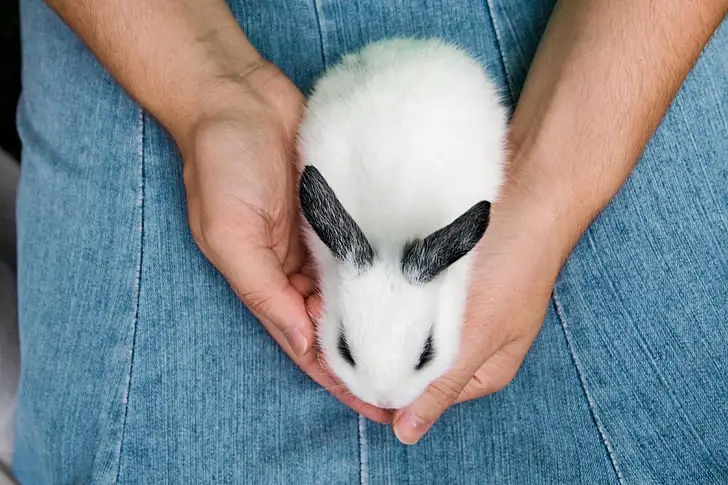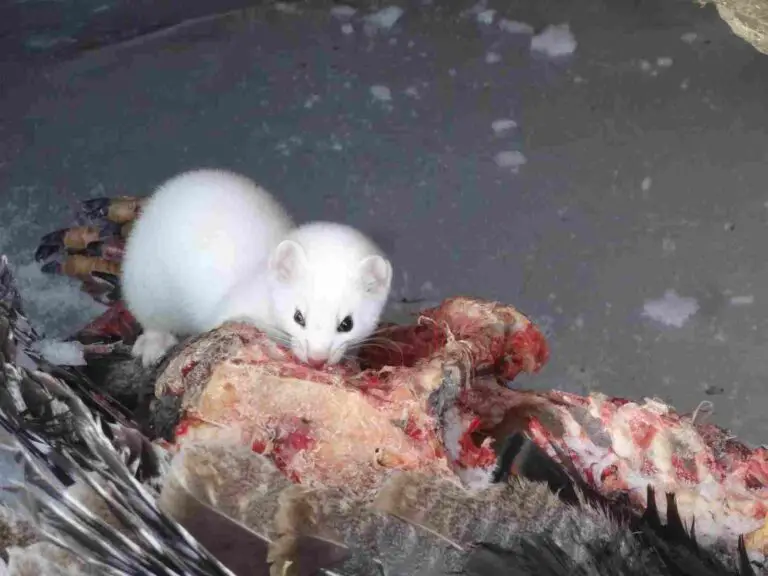Short Faced Bear Vs Polar Bear Size, Weight, Ecological Comparison
The short-faced bear and the polar bear are two formidable creatures that can be compared in various aspects. While both are impressive in their own right, the short-faced bear’s size and weight give it a significant advantage in a violent confrontation.
In this article, we will explore the taxonomy, appearance, size, weight, speed and agility, bite force, overall physical capacity, habitat, lifespan, behavior, reproduction, danger posed to humans, and conservation status of these two bears.
Key Outcomes
*Biological Comparison
The Short Faced Bear and the Polar Bear are not biologically related in terms of genus and species. They belong to different taxonomic families. The Short Faced Bear, also known as Arctodus, belongs to the family Ursidae, while the Polar Bear belongs to the family Ursidae as well, but in a different genus called Ursus. Despite their different biological classifications, a comparison between these two animals reveals interesting differences and similarities.
*Size and Weight Comparison
The Size and Weight Comparison between the Short Faced Bear and the Polar Bear is a fascinating aspect to explore. When it comes to size, the Short Faced Bear was much larger than the Polar Bear. It stood taller on its hind legs, reaching heights of up to 11 feet. In terms of weight, the Short Faced Bear was estimated to weigh around 2,000 pounds, while the Polar Bear weighs between 900 to 1,600 pounds.
This significant difference in size and weight between the two bears showcases the impressive stature of the Short Faced Bear.
*Physical Capability Comparison
Both the Short Faced Bear and the Polar Bear possess immense strength, but the Short Faced Bear is known for its exceptional power.
When it comes to a confrontation between these two animals, it can be tricky to predict which one would overpower the other. However, a detailed comparison of their physical attributes can shed light on their potential outcomes in such encounters.
1). Taxonomy
The Short Faced Bear, scientifically known as Arctodus simus, belongs to the genus Arctodus. It is an extinct species that lived during the Pleistocene epoch. On the other hand, the Polar Bear, scientifically known as Ursus maritimus, belongs to the genus Ursus and is a living species found in the Arctic region.
When comparing the taxonomy of these two bears, it is evident that they belong to different genera. While the Short Faced Bear is more closely related to other extinct bear species, the Polar Bear shares a closer evolutionary relationship with other living bear species, such as the Brown Bear.
Despite their taxonomic differences, both bears share certain similarities in their physical characteristics and ecological adaptations. Understanding their taxonomy provides a foundation for further exploration of their appearance, size, weight, and other aspects that contribute to their unique identities.
2). Appearance
The appearance of the Short Faced Bear and the Polar Bear is distinct and adapted to their respective environments.
In terms of their coat, both bears have fur that serves different purposes. The Short Faced Bear had a shorter and coarser coat, which may have provided protection against the harsh conditions of the Pleistocene epoch. On the other hand, the Polar Bear has a thick layer of insulating fur that helps it survive in the cold Arctic climate.
Camouflage is another important aspect of their appearance. The Short Faced Bear had a lighter-colored coat, which could have helped it blend in with its surroundings and remain undetected by prey or predators. In contrast, the Polar Bear has a white coat that provides excellent camouflage in the snowy Arctic landscape, allowing it to approach seals and other prey more easily.
In terms of stature and build, the Short Faced Bear was known for its impressive size and robust build. It had a more muscular and stocky body compared to the Polar Bear, which is adapted for its predatory lifestyle. The Polar Bear, although smaller in size, has a streamlined body shape that enables it to swim efficiently and hunt in the water.
Overall, the appearance of these two bears reflects their unique adaptations to their respective habitats. While the Short Faced Bear had a coat and build suited for the Pleistocene environment, the Polar Bear’s appearance is perfectly adapted for life in the Arctic.
3). Size
Short faced bears were generally larger than polar bears.
When comparing the Short Faced Bear and the Polar Bear, their size is a significant point of distinction. The Short Faced Bear was known for its impressive size, with estimates suggesting it could reach lengths of up to 11 feet and stand at a height of around 5 feet at the shoulders. This massive size made it one of the largest terrestrial carnivores of its time. In contrast, the Polar Bear, while still formidable, is generally smaller in comparison. Adult males typically measure around 8 to 9 feet in length and stand at a height of about 4 to 5 feet at the shoulders.
The size difference between these two bears is primarily due to their different ecological contexts. The Short Faced Bear inhabited the Pleistocene epoch, where it needed to compete with other large predators for resources. Its size was likely an adaptation to secure prey and defend itself against competitors. On the other hand, the Polar Bear’s size is more suited to its Arctic environment, where it primarily hunts seals on sea ice. Its smaller size allows for greater agility and efficiency in swimming and navigating the icy terrain.
4). Weight
When comparing the Short Faced Bear and the Polar Bear, their weight is another important factor to consider. The Short Faced Bear was known for its immense size, and this was reflected in its weight. Estimates suggest that these bears could weigh anywhere between 1,500 to 3,500 pounds. In contrast, the Polar Bear, while still substantial, is generally lighter. Adult males typically weigh around 900 to 1,600 pounds.
The weight difference between these two bears is influenced by their ecological adaptations. The Short Faced Bear’s larger size and weight were likely advantageous in its competition for resources during the Pleistocene epoch. Its massive weight would have allowed it to overpower prey and assert dominance over other predators. On the other hand, the Polar Bear’s weight is more suited to its Arctic environment. Being lighter enables it to navigate the fragile sea ice more efficiently and swim for long distances in search of seals, its primary food source.
The Short Faced Bear outweighs the Polar Bear significantly. However, it’s important to note that weight alone does not determine the overall physical capabilities or ecological success of a species. The specific adaptations and behaviors of each bear are crucial in their respective habitats.
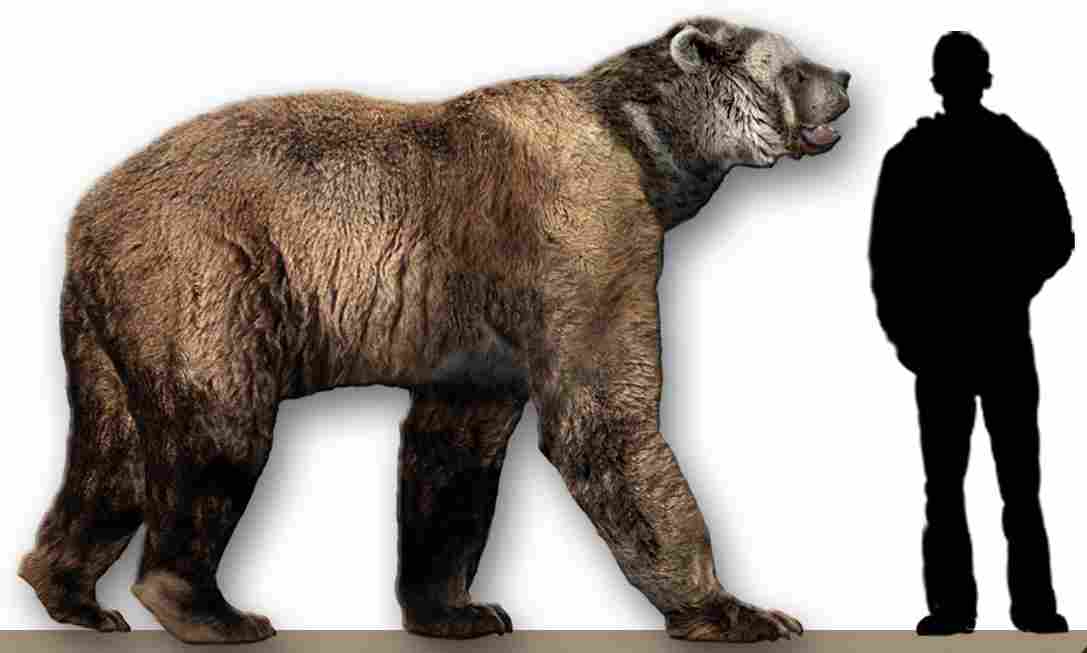
5). Speed and Agility
When comparing the Short Faced Bear and the Polar Bear, their speed and agility are important factors to consider. The Short Faced Bear, despite its massive size and weight, was surprisingly agile for its build. It had long limbs and a flexible spine, allowing it to move swiftly and efficiently. This agility was crucial for hunting down fast prey, such as bison and horses, during the Pleistocene epoch.
On the other hand, the Polar Bear, although not as agile as the Short Faced Bear, possesses remarkable swimming abilities. It is well-adapted to its Arctic environment, where it spends a significant amount of time in the water. The Polar Bear’s streamlined body and powerful forelimbs enable it to swim long distances and navigate through icy waters in search of seals.
While the Short Faced Bear may have had an advantage in terms of agility on land, the Polar Bear excels in its aquatic habitat. Each bear’s speed and agility are tailored to suit their specific ecological niche. The Short Faced Bear’s ability to chase down prey on land and the Polar Bear’s proficiency in swimming both contribute to their survival and hunting strategies.
6). Bite Force
When comparing the Short Faced Bear and the Polar Bear, their bite force is a crucial aspect to consider. The bite force of an animal is a measure of its jaw strength and can provide insights into its hunting capabilities and ability to consume prey.
The Short Faced Bear, with its robust skull and powerful jaw muscles, possessed an impressive bite force. This allowed it to deliver devastating bites to its prey, enabling it to overpower and immobilize large herbivores. With its sharp, strong teeth, the Short Faced Bear could easily puncture through tough hides and bones, making it a formidable predator.
On the other hand, the Polar Bear also possesses a formidable bite force. Although not as powerful as the Short Faced Bear, the Polar Bear’s bite is still strong enough to crush the skulls and bones of its prey. This is particularly important for the Polar Bear’s diet, which primarily consists of seals. The ability to deliver a powerful bite allows the Polar Bear to efficiently capture and consume its prey.
7). Overall Physical Capacity (Which is Stronger?)
When comparing the overall physical capacity of the Short Faced Bear and the Polar Bear, several factors need to be evaluated and compared. These factors include size, weight, speed, agility, bite force, and physical capabilities. By examining these aspects, we can determine which bear is stronger and which would prevail in a violent confrontation.
In terms of size and weight, the Short Faced Bear was larger and heavier than the Polar Bear. With its massive frame and robust build, the Short Faced Bear had a clear advantage in terms of sheer strength. However, the Polar Bear compensates for its slightly smaller size with its agility and speed, making it a formidable opponent.
When it comes to bite force, both bears possess impressive capabilities. The Short Faced Bear’s powerful jaw muscles and sharp teeth allowed it to deliver devastating bites, while the Polar Bear’s bite is strong enough to crush the skulls and bones of its prey. This indicates that both bears have the potential to cause significant harm to each other in a confrontation.
Generally, short faced bears were stronger than polar bears. While the Short Faced Bear has the advantage in terms of size and weight, the Polar Bear compensates with its agility and speed. Both bears possess formidable bite forces, making them capable of inflicting serious damage. Ultimately, the outcome of a violent confrontation between these two powerful predators would depend on various factors such as the circumstances, environment, and individual strengths of the bears.
8). Habitat
The habitat of the Short Faced Bear and the Polar Bear plays a role in shaping their behavior and survival strategies. Both bears have adapted to different ecosystems and have distinct geographic ranges.
The Short Faced Bear inhabited a wide range of ecosystems, including grasslands, forests, and tundra regions. This bear was highly adaptable and could thrive in various environments. Its ability to traverse different landscapes allowed it to hunt a diverse range of prey, including large herbivores like bison and mammoths.
On the other hand, the Polar Bear is primarily found in the Arctic region, specifically in areas with sea ice. These bears rely on the ice to hunt seals, their primary food source. The Arctic provides the perfect habitat for the Polar Bear, with its icy waters and abundant marine life.
When comparing the habitats of these two bears, it is evident that they have distinct preferences and adaptations. The Short Faced Bear’s ability to inhabit different ecosystems gave it an advantage in terms of food availability and adaptability. In contrast, the Polar Bear’s reliance on sea ice makes it vulnerable to the effects of climate change and diminishing ice cover.
Drawing from the above, the Short Faced Bear and the Polar Bear have different habitat requirements and adaptations. While the Short Faced Bear was adaptable to various ecosystems, the Polar Bear’s survival is closely tied to the Arctic sea ice.
9). Lifespan
When comparing the lifespan of the Short Faced Bear and the Polar Bear, it is important to consider their different ecological contexts and evolutionary histories. The Short Faced Bear had an average lifespan of around 20 to 25 years in the wild. This relatively short lifespan can be attributed to various factors, including competition for resources, predation, and environmental challenges.
On the other hand, the Polar Bear has a longer lifespan, with individuals living up to 25 to 30 years in the wild. This extended lifespan can be attributed to the Polar Bear’s specialized adaptations for survival in the Arctic environment, such as its thick layer of blubber and efficient hunting strategies. Additionally, the Polar Bear faces fewer natural predators in its habitat, which contributes to its longer lifespan.
It is important to note that these lifespan estimates are based on wild populations and can vary depending on various factors, including food availability, environmental conditions, and human impacts. In captivity, both bears have the potential to live longer, with some individuals reaching their late 30s or even 40s.
The Short Faced Bear has a relatively shorter lifespan compared to the Polar Bear. This difference can be attributed to their distinct ecological contexts, including competition, predation, and environmental factors.
10). Behavior
The behavior of the Short Faced Bear and the Polar Bear differs significantly due to their distinct ecological contexts and evolutionary adaptations.
In terms of feeding behavior, both bears exhibit different strategies. The Short Faced Bear was primarily a terrestrial carnivorous species, relying on hunting and scavenging for its food. Its large size and powerful jaws allowed it to take down large prey, such as bison and mammoths. On the other hand, the Polar Bear is a specialized predator of marine mammals, particularly seals. It uses its excellent swimming ability and patience to ambush its prey on sea ice.
Aggression is another aspect where the two bears differ. The Short Faced Bear was predictably more aggressive than the Polar Bear, except during mating season or when defending its cubs.
Vocalization and social behavior also vary between the two species. The Short Faced Bear is believed to have had limited vocalizations, relying more on body language and physical displays to communicate. In contrast, the Polar Bear has a wider range of vocalizations, including growls, roars, and chuffs, which are used for communication and establishing dominance.
When it comes to parenting, the Polar Bear exhibits more maternal care compared to the Short Faced Bear. Female Polar Bears build maternity dens and give birth to their cubs in winter, providing them with protection and nourishment until they are ready to venture out.
The behavior of the Short Faced Bear and the Polar Bear differs in terms of feeding strategies, aggression, vocalization, socialization, and parenting, which are influenced by their ecological contexts and evolutionary adaptations.
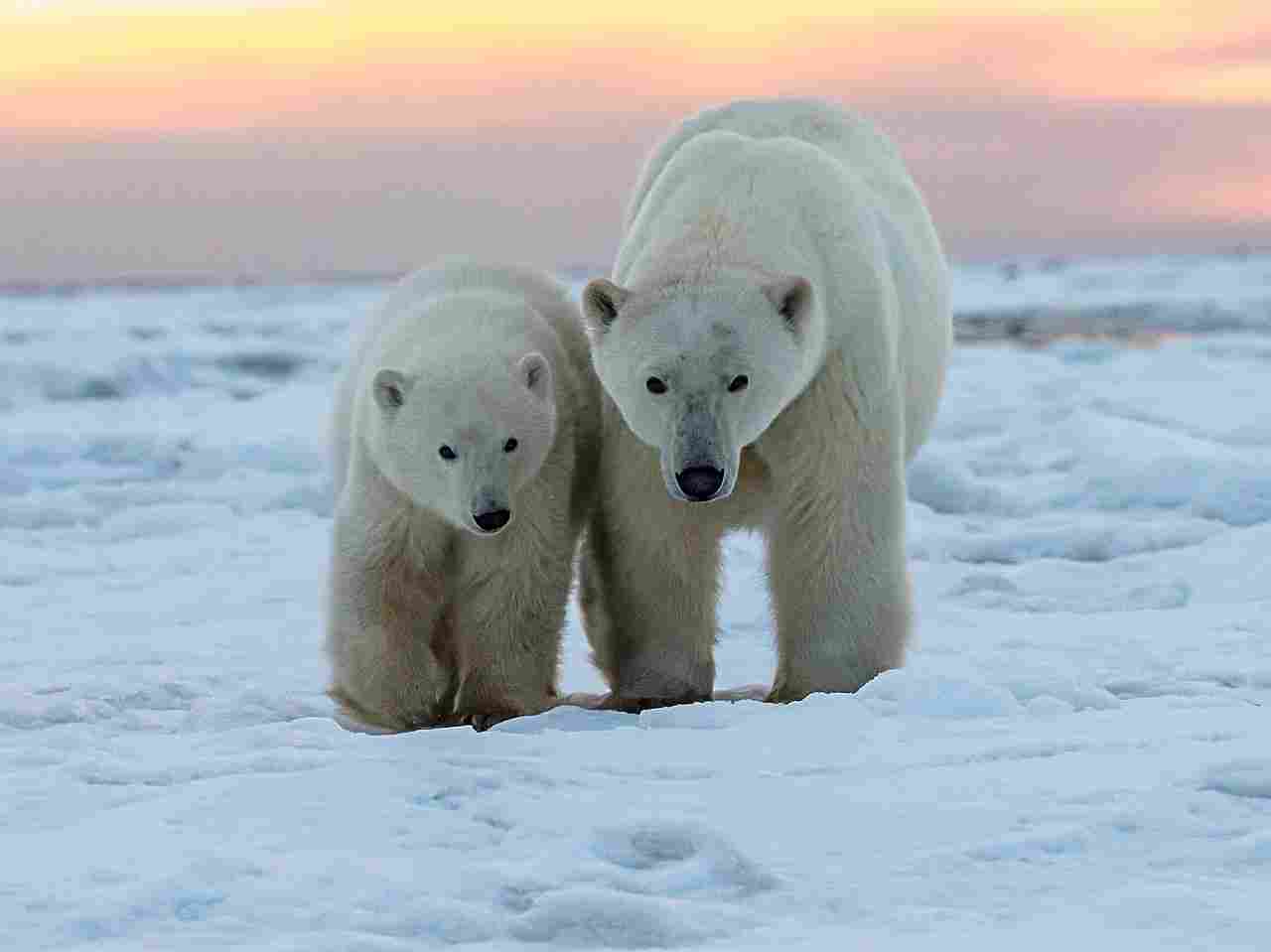
11). Reproduction
The reproductive strategies of the Short Faced Bear and the Polar Bear differ significantly due to their distinct ecological contexts and evolutionary adaptations.
The Short Faced Bear was viviparous, meaning it gave birth to live young. It had a gestation period of approximately 6 to 8 months, similar to modern bears. Female Short Faced Bears would typically give birth to one or two cubs at a time, which they would care for and protect until they were old enough to survive on their own. This reproductive strategy allowed the species to maintain a stable population and adapt to changing environmental conditions.
In contrast, the Polar Bear is also viviparous but exhibits a unique adaptation known as delayed implantation. After mating, the fertilized egg does not immediately implant in the female’s uterus. Instead, it remains in a state of suspended development until conditions are favorable for the female to give birth. This adaptation allows Polar Bears to synchronize their reproduction with the availability of their primary food source, seals. Once the egg implants, the gestation period is approximately 8 to 9 months, and the female gives birth to one to three cubs in a snow den.
The reproductive strategies of the Short Faced Bear and the Polar Bear differ in terms of viviparity, gestation period, and the number of cubs born. These strategies are influenced by their ecological contexts and evolutionary adaptations, ensuring the survival and success of each species in their respective environments.
12). Danger Posed to Humans
The danger posed to humans by the Short Faced Bear and the Polar Bear varies due to their different behaviors and interactions with human settlements.
Short Faced Bears, although extinct now, were known to roam across North America during the Pleistocene epoch. They likely came into contact with early human populations, but there is limited evidence of direct aggression towards humans. However, their large size and predatory nature suggest that caution should have been exercised when encountering them.
On the other hand, Polar Bears are known to inhabit regions close to human settlements in the Arctic. As their natural habitat is being affected by climate change, there have been increased reports of human encounters. While Polar Bears are generally not aggressive towards humans, they can become dangerous if they feel threatened or if their food sources are scarce. It is important for humans to take precautions, such as avoiding close proximity to Polar Bears and properly storing food and waste to minimize potential conflicts.
In terms of human deaths caused, both species have been involved in fatal encounters. However, it is important to note that such incidents are relatively rare and can often be avoided through proper education, awareness, and responsible behavior in bear country.
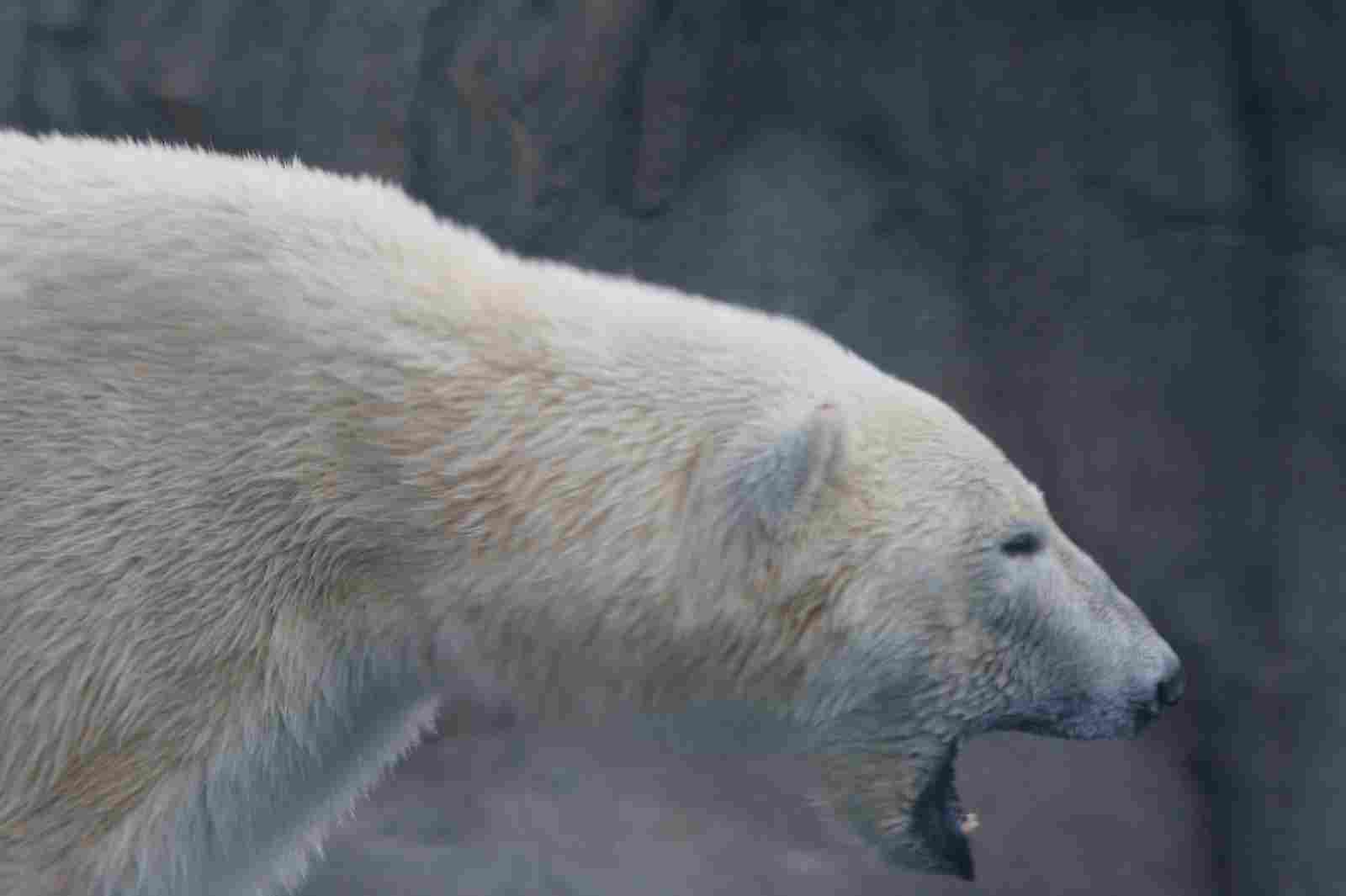
13). Conservation Status
The conservation status of the Short Faced Bear and the Polar Bear differs due to their distinct ecological situations and the main threats they face in the wild.
The Short Faced Bear, being extinct now, is not currently assigned a conservation status. However, during its existence, this species faced various challenges that likely contributed to its extinction. Climate change, habitat loss, and competition with other large predators are believed to have played a role in the decline of the Short Faced Bear populations.
In contrast, the Polar Bear is currently listed as a vulnerable species by the International Union for Conservation of Nature (IUCN). The main threats to the survival of wild Polar Bear populations include climate change and loss of sea ice, which is crucial for their hunting and breeding activities. As the Arctic sea ice continues to melt at an alarming rate, Polar Bears are facing a significant reduction in their habitat and access to food sources, leading to population declines.
Efforts are being made to conserve both species. For the Short Faced Bear, conservation efforts focus on studying its paleontological remains to better understand its ecology and the factors that led to its extinction. In the case of the Polar Bear, conservation initiatives aim to mitigate the impacts of climate change, protect critical habitats, and regulate hunting practices.
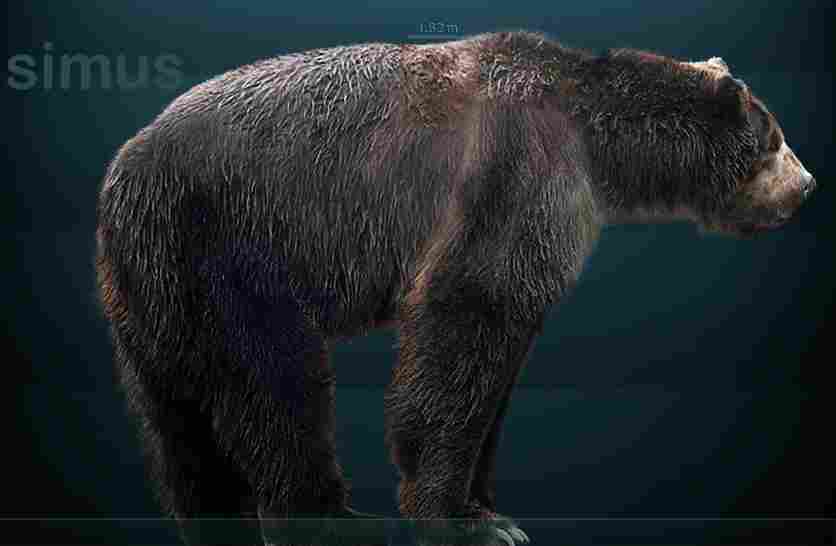
Conclusion
I). SIMILARITIES
The Short Faced Bear and the Polar Bear share some similarities in terms of their size and physical capabilities. Both bears are large and powerful predators, adapted to survive in their respective habitats. They have strong jaws and sharp teeth, allowing them to effectively hunt and consume their prey. Additionally, both species have a thick layer of fat and a dense fur coat, which helps them to withstand cold temperatures.
II). DIFFERENCES
Despite their similarities, there are several key differences between the Short Faced Bear and the Polar Bear. One of the main differences is their habitat. The Short Faced Bear inhabited various regions of North America, while the Polar Bear is primarily found in the Arctic region. This difference in habitat has led to variations in their physical characteristics and behaviors.
Another significant difference is their conservation status. As mentioned earlier, the Short Faced Bear is extinct, while the Polar Bear is currently listed as a vulnerable species. This highlights the contrasting ecological situations and threats faced by these two bears.

